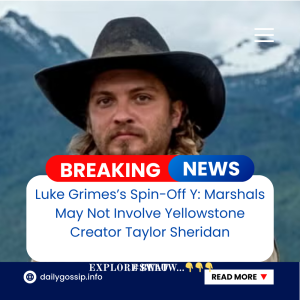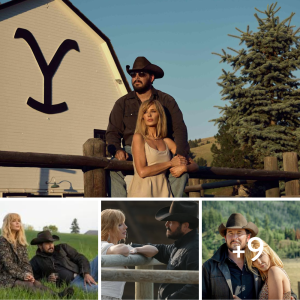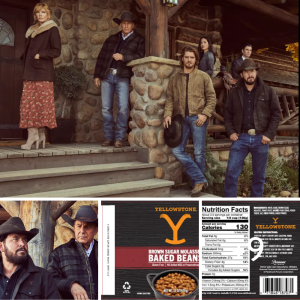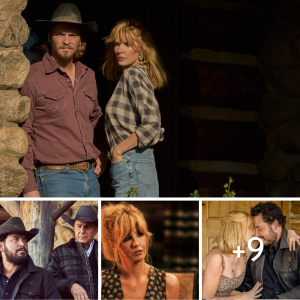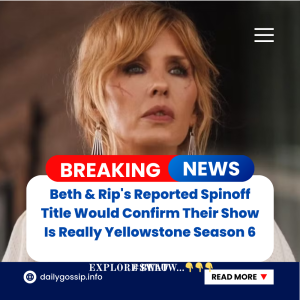In the bonus episode “Stories from the Bunkhouse (Bonus) | What Cowboys Don’t Say”, the cast of Yellowstone opens up about their experiences on set, providing a behind-the-scenes glimpse into the world of the bunkhouse. The episode dives into the dynamic between the actors, the rawness of their performances, and some of the unforgettable moments from the show’s production.
The episode kicks off with a look at Jimmy’s character, whose journey started with a rough encounter with Rip, played by Cole Hauser. Rip yanks Jimmy out of his trailer, setting the tone for their complicated relationship throughout the show. In a particularly memorable scene, Rip brands Jimmy, and the production team took great care to make it as realistic as possible. Hauser himself was hands-on in this moment, holding the branding iron to Jimmy’s chest, adding an element of authenticity to the moment. The actors’ trust in one another is evident here, as they share a commitment to bringing the gritty and authentic world of Yellowstone to life.
The episode also takes a deep dive into the bunkhouse, where many of the series’ key characters have spent significant time. It’s a space that’s not quite a home for any of them, but a necessary place to crash before heading back out to work on the ranch. The cast reflects on the physicality of the bunkhouse, with no one truly settling in—except for Lloyd, who has made it his permanent residence. His bed is stapled into the wall, a reflection of the idea that once you’re in the bunkhouse, you’re likely to stay there forever. There’s a sense of impermanence in the way the characters live, always working, always moving.
The bunkhouse isn’t just a setting; it’s a character in its own right. While some of the cast were only on set for specific scenes, the bunkhouse provided the constant backdrop for their lives as cowboys. Jimmy’s introduction to this world is brutal. In one of his first scenes, he’s subjected to a cold shower as part of his initiation, a reminder of the harsh and often unforgiving world of the Dutton Ranch. But Jimmy isn’t alone in his struggles. The other bunkhouse men share their own scars, like Lloyd, who reveals his own brand in solidarity with Jimmy. There’s a shared bond between the men, built through pain and loyalty to the Dutton family.
The episode also delves into the unpredictable nature of Yellowstone’s shooting style, where much of the horse riding and action sequences are filmed in a documentary style. This approach adds an element of realism, as the actors have to react organically to their surroundings and the animals they work with. It’s an unpredictable process that keeps the cast on their toes, allowing for more natural interactions and performances. This approach makes the drama of the show feel grounded, as the actors seem to be living the life they’re portraying, not just acting it out.
The chemistry between the actors is apparent, with moments of lightheartedness, particularly when Jennifer Landon’s character, Teeter, enters the scene. Her presence adds a new layer of humor and chaos to the already chaotic bunkhouse dynamic. Her first interaction with Jimmy, where she calls him a “plucked mother f***ing chicken,” highlights the rough and tumble nature of the world they inhabit. Her character’s fiery personality pushes the other men, forcing them to step up and embrace the wild energy she brings to the table.
As the episode continues, the conversation turns to some of the more intense moments from Yellowstone’s past, including the notorious “train station” where many of the show’s enemies have met their untimely demise. The bunkhouse men reflect on the various individuals they’ve sent to the train station over the years, including Fred, a character who first introduced the audience to the brutal finality of the Dutton family’s wrath. From the Beck Brothers to the explosive death of the militia members, the train station has become a symbol of the show’s brutal justice. In season one, we even see Rip himself kill a mortician, showcasing the darker side of the characters’ lives. The show’s penchant for violence and vengeance is balanced by moments of camaraderie and humor in the bunkhouse, creating a dynamic that’s both heart-wrenching and thrilling.

The train station has become a running motif in the series, with various characters meeting their end there. The men joke about the various ways characters have ended up at the train station, from shootings to explosions. It’s a reminder that in Yellowstone, the consequences for crossing the Duttons are severe and irreversible. Even the characters who seem to be on the periphery, like Jimmy’s grandfather, are not immune to this brutal fate. The show doesn’t shy away from the harsh realities of ranch life, where betrayal and violence are common themes.
The conversation then shifts to some of the more humorous aspects of cowboy life. The cast shares what cowboys “don’t say,” and it’s a playful moment that highlights the unique way they speak. For instance, they all agree that cowboys never say “good morrow” or “you hurt my feelings.” These are phrases that are simply out of place in the tough, no-nonsense world of Yellowstone. The actors riff on other sayings that are unlikely to come from a cowboy’s mouth, like “FOMO” or “Rizz.” It’s a lighthearted moment that adds a touch of humor to the otherwise gritty world of the show. The actors also joke about their own misunderstandings of modern slang, like “bussin” and “Rizz,” further cementing their characters’ timeless, rugged nature.
In one of the final moments of the episode, the cast reflects on the toughness of their stunt double, Duke, who was famously hit by a bull during the cowboy poker sequence in season two. Despite the injury, Duke returned to work the next day, embodying the tough, resilient spirit of a true cowboy. This story highlights the physical demands of working on the show, where the actors and stunt doubles are constantly pushed to their limits.
Ultimately, “Stories from the Bunkhouse (Bonus) | What Cowboys Don’t Say” is a celebration of the tough, resilient characters who have come to define Yellowstone. From the brutal reality of the train station to the humor and camaraderie in the bunkhouse, this bonus episode offers a deep dive into the world of the Dutton Ranch and the people who inhabit it. Whether they’re working with buffalo, shooting scenes with a documentary-style approach, or making fun of modern slang, the cast showcases the heart and soul of the show. It’s a testament to the collaborative spirit that makes Yellowstone such a unique and compelling series.
